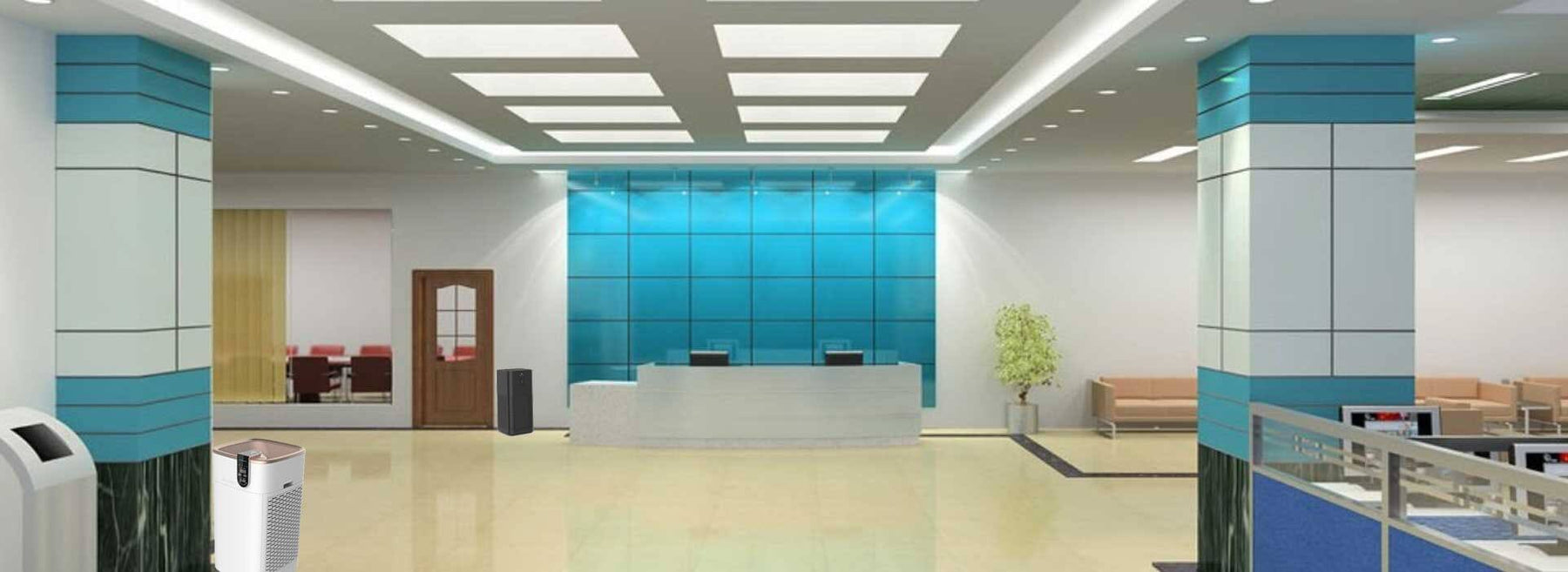
Choosing the right air purifier for home and commercial buildings
Pollutants in indoor air can harm human health. Some of these pollutants are emitted from the outdoor environment. In contrast, most other pollutants are emitted from interior sources and activities such as heating, housekeeping, secondary smoking, construction materials, consumer items, and home decor. These indoor air pollutants might take the form of particles or gasses, such as volatile organic compounds. The quality of indoor air varies from house to house throughout the day. Because most individuals spend 90% of their time inside their homes, most of their exposure to airborne contaminants will occur there.
One of the most comprehensive solutions to enhance your interior air quality is limiting or eliminating sources of contamination and replacing them with fresh air from outside. Furthermore, studies demonstrate that air purification might be a valuable aid to air circulation. Using a portable air cleaner and/or replacing the air filter in your furnace or central heating, ventilation, and air-conditioning (HVAC) system can improve indoor air quality.
Handheld air cleaners, commonly referred to as air purifiers or air sanitizers are intended to remove the impurities in a single room or area. Central furnace filters, often known as HVAC filters, filter air throughout a home. Handheld air cleaners and HVAC filters can help to minimize indoor air pollution, but they cannot remove all contaminants.
How to Choose a Portable Air Cleaner, Furnace Filter, or HVAC Filter?
A household air purifier or filtration system will not remove every air contaminant.
The vast majority of filters are intended to filter particles or gasses. As a result, many air cleaners have two filters, one for particles and one for gasses. A conventional air cleaner contains only one filter, commonly used to filter out impurities. Similarly, certain air cleaners or filters are intended to target specific gasses or VOCs.
All filters should be replaced continuously.
Most air purifiers are kept on the floor, easily accumulating dust. Large particles of dust can easily clog the air filters quickly, thus reducing the lifespan of the filter.
Air filters are often overlooked since they are customarily stashed away in a closet or storage place. A clogged and unclean filter will obviously not work correctly, so the regular replacement of filters is necessary. Setting yourself reminders is crucial to make sure you replace your home's air filters regularly.
How to Choose Portable Cleaners?
Air purifying/cleaning technology can be integrated into a building's heat pumps (HVAC) system or be transportable.
Portable units are available in the big console and compact countertop configurations and are designed for usage in restricted places inside a building, such as a sole-occupancy unit.
Select a transportable air cleaner with a clean air distribution rate (CADR) sufficient for the room layout or area where it will be used to filter contaminants. The greater the CADR, the more particles the air cleaner can filter and the greater its service area. The most significant size area or room that an air cleaner should be utilized in is usually stated on the package. Portable air cleaners typically have high CADRs because they use high-efficiency particulate air (HEPA) filters.
Further, to filter gases, use a portable air cleaner with an activated carbon filter or similar filter designed to extract gases. It is important to note that portable air cleaners or gas-removal filters do not have a commonly accepted performance rating. The CADR rating system is just for particles. Activated carbon filters can be effective if a substantial volume of material is utilized in the filter.
Both particles and gasses can be filtered using a portable air cleaner with a high CADR and an activated carbon filter.
When to choose Furnace and HVAC Filters?
Furnace and HVAC filters only improve air quality when the system is powered on. HVAC systems are typically only activated when heating or cooling is required. The system would have to run for extended periods to achieve additional filtering. Longer run lengths may not be desired or possible in many circumstances since they increase power bills and result in less consistent humidity management during the cooling season.
Filters for furnaces and HVAC systems in houses typically filter particulates. If you opt to update or utilize a better efficiency filter, consider one with at least a MERV 13 rating or as high as your system fan and filter slot can handle.
To select the maximum efficiency filter that would work best for your system, you must visit a professional HVAC specialist.
Other devices without filters may also remove particles and gases. They are more prevalent in large and commercial buildings and often fit into the HVAC ducting.
In conclusion, no HEPA filter can eliminate all indoor air contaminants, a slightly elevated filter paired with a well-maintained HVAC system can benefit. This list of ideas and suggested filters is an excellent starting point for healthier indoor air.
Frequently Asked Questions
Can handheld air cleaners and furnace/HVAC filters be beneficial to one's health?
Numerous studies with portable HEPA air purifiers have shown minor benefits in cardiorespiratory health. Even though health experts may assess the gains, they are often minor and not necessarily apparent to the individuals.
Do air purifiers get rid of dust in the house?
Yes, most air purifiers on the market are intended to remove big dust particles from the air. Many have electromechanical purification, which is a way of collecting contaminants on filter media. The particles are either supposed to cling to the filter or become trapped inside the filter strands.
Where should an air purifier be placed?
Typically, placing your purifier near a window or near a doorway is your best chance. Another reason to position purifiers near high-traffic areas is that flowing air has enough force to remove dust, mold, and other pollutants, which may then disperse throughout your home.
Should I keep the air purifier running all the time?
When you switch off the purifier, contaminants begin to collect again, making the purifier's task more difficult. Continuously running the air purifier will eliminate additional pollutants as they are introduced.

Leave a comment